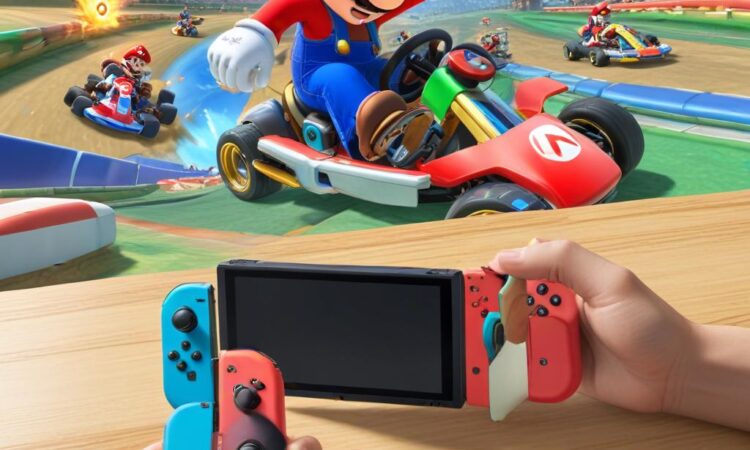Will £75 Be the New Normal for Video Games After Switch 2’s Mario Kart?
Right, let’s talk about the elephant in the room – or should I say, the elephant *priced* at £75 in the room. The internet’s been buzzing about the upcoming Switch 2 (we’re still not entirely sure what it’s officially called, are we?), and while everyone’s hyped about the potential for awesome new games and improved graphics, there’s a nagging worry at the back of everyone’s minds: the price tag.
Word on the street (and by “street” I mean various gaming forums and slightly-leaky industry insiders) suggests that some Switch 2 titles might launch at a whopping £75. Seventy-five quid! That’s…a lot. For a single game. I mean, I know inflation’s a thing, and that we’ve seen prices creep up over the years, but this feels like a bit of a leap.
Now, I get it. Development costs are high. Marketing campaigns cost a fortune. The companies need to make a profit. But £75? Is that really sustainable? Are we heading into a new era of gaming where premium titles consistently break the £70 barrier? Because if that’s the case, my wallet is already feeling a little lightheaded.
The whole Mario Kart situation is particularly interesting. It’s a flagship franchise, a guaranteed seller. If *they’re* charging £75, it sets a pretty scary precedent. Suddenly, that new open-world RPG you’ve been eyeing might also be flirting with the three-figure mark, and that’s not including any inevitable DLC or season passes that are increasingly common.
Of course, there are arguments to be made in favour of higher prices. Better graphics, more content, longer development times – it all adds up. And some people are arguing that the value for money is still there, especially when you compare it to the cost of other forms of entertainment.
But for many gamers (myself included), £75 is a significant price hurdle. It means more careful budgeting, more strategic purchasing, and potentially, some tough decisions about which games make the cut. It might mean delaying purchases, waiting for sales, or simply missing out on titles altogether. And that’s not ideal for anyone, especially those of us on a budget.
So, what’s the answer? Is £75 the new normal? Honestly, I’m not sure. It’s too early to tell. The gaming market is complex, with various factors influencing pricing decisions. But it’s a conversation we need to have. We need to ask ourselves if we’re willing to accept these higher prices, and whether the gaming industry can realistically sustain this price point in the long run. Will this price point push more people towards subscription services or used games? The impact will be far-reaching.
There’s a lot riding on this. Will publishers find buyers willing to consistently pay this price? Will they push forward regardless of sales? Will this be a temporary spike or a new standard for AAA titles? Time will tell, I suppose. But one thing’s for certain: this isn’t just about the cost of a single game – it’s about the future of the entire gaming industry.
In the meantime, I’m going to be keeping a close eye on things, and trying to figure out how I’m going to afford my gaming habit without selling a kidney. Anyone else feeling the pinch?
Let’s talk in the comments! What are your thoughts on the potential £75 price point for games? Is this a deal-breaker for you, or are you prepared to pay the price for premium titles?
It’s a tough question, one without easy answers. Only time (and sales figures) will tell if £75 is truly the new normal. This isn’t just about a new console or a new game, it’s about the future of how we experience games and what we are prepared to pay for the privilege.
This issue is only going to become more relevant as more games are released on the next generation of consoles. Will developers consistently charge this premium or will this price point be reserved for certain, marquee titles? Only time will tell.
We’ll have to stay tuned to see what happens, but one thing is clear: the conversation about the price of video games is far from over.

